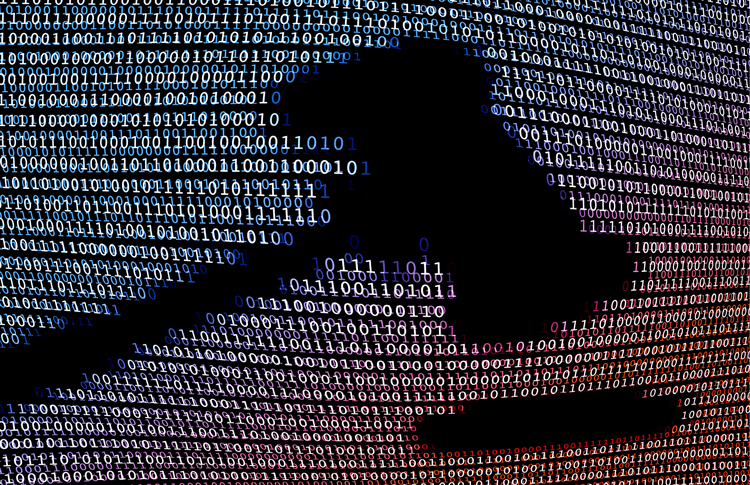
The global pandemic has rapidly sped up technology adoption across even typically conservative industries and users, and the disputes hearing process is no exception. While for some, this has created a steep learning curve, cost efficiencies and time saved, are among the payoffs that ensure digital disputes are likely here to stay.
COVID-19 has disrupted processes around the world, and for dispute resolution, it’s no different. While the transformative role of technology has been immense, with dispute hearings quickly moving online, many of these mechanisms have existed before the pandemic. But as clients who would typically demand in-person hearings lean toward digital, the entire industry is undertaking something of a culture shift.
The team at Davis Polk & Wardwell know this acutely. The firm recently completed a virtual hearing with counsel and witnesses spread around the world, using real-time language interpretation.
Partner Martin Rogers, Davis Polk’s lead lawyer on the hearing, tells Asian Legal Business that the increased importance of technology as a result of the pandemic will continue. “In fact, we view the pandemic as a trigger for a process of technology adoption in dispute resolution that will advance much further,” says Rogers.
The pandemic has also demonstrated that even complex hearings can be conducted remotely, and large volumes of evidence can be handled smoothly — all thanks to existing technology, he adds.
Jonathan Chang, a counsel at Davis Polk who was also involved in the hearing, says that it spanned across 10 days, with “45,000 documents displayed using electronic bundles and links, 11 witnesses (two of which required interpreters), the tribunal, each advocacy team (one in London, one in Hong Kong) and most of the witnesses being in four different locations around the world, with the 11 witnesses giving evidence from seven different locations.” Nevertheless, it all went generally quite smoothly.
“We did not feel the effectiveness of the advocacy was compromised by the format of the hearing. Even though we were not in the same room with the Tribunal members, the witnesses, or the lawyers from the other side, we were able to observe their facial expressions and body language clearly and closely from their blown-up image on the screen. It was still possible to develop rapport with the Tribunal members and witnesses, and the remote nature of the hearing did not impede the ability to conduct a searing cross-examination,” Chang says.
Similarly, Nick Gall, senior partner at Hong Kong dispute resolution boutique Gall, has watched the role of technology growing during the pandemic.
“In February, we acted for the plaintiff in Hong Kong’s first telephonic hearing in Cyberworks Audio Video Technology v Mei Ah (HK) Company Limited & Ors,” says Gall, who calls this a milestone in the judiciary’s approach when it comes to cost-effectiveness and speed.
“A key witness in the trial was unable to be in Hong Kong due to travel restrictions so we requested permission from the Judge for him to give evidence via video link. We also used digitised trial bundles and wrote to the Judge asking to provide submissions via email which the Judiciary proceeded to roll out,” Gall adds, noting his team were proactive in suggesting new solutions for clients and were “crucial in helping to modernise the Judiciary,” says Gall.
REMOTE BENEFITS
While social distancing restrictions and congregation rules have created new perimeters for businesses and courts, there have also been positives.
“An unexpected benefit of the remote hearing was that the virtual plat-form provided us with the equivalent of a technology-enhanced courtroom,” says Chang.
“We were able to display documents we want to show on the screen quickly by giving the precise references to the electronic hearing bundle to the document operator. We were even able to display multiple documents side by side on the screen, which enabled us to more clearly demonstrate the inconsistencies or commonality between the documents,” he adds.
To ensure that processes remain smooth, Chang says it was important for all the parties involved to work collaboratively to come up with a protocol for the hearing, “setting out the techno-logical requirements (both hardware and software), the location from which the attendees participate in the hearing, arrangements for testing and technical support, what to do when there is a disconnection, the arrangements for hard copy and electronic hearing bundles, etc.”
Additionally, using facilities at established arbitration centres, “in our case, HKIAC and London IAC,” and engaging a vendor with experience in virtual hearing is also advised says Chang. He notes: “This will enable the advocates to focus on the case, rather than being distracted by technical hiccups that may occur during the hearing. Although this may seem like a small point, accurate bundle references and links to documents are critical and do need to be double-checked or triple-checked.”
ANXIETY DISSIPATING
With cost-effectiveness at the front of mind for many, for sophisticated clients there has been something of a realisation that virtual hearings definitely cut expenses (including those related to travel), and time.
“The anxiety that a fair and effective hearing is only possible remotely in a physical setting is dissipating,” says Rogers. “Arbitrators and judges have become more confident that they can manage hearings and resolve disputes fairly without the need for physical hearings. Everyone is moving in the same direction. Crucial are (1) high-quality and reliable videoconferencing, (2) document management and display Systems, and (3) good transcription services. These are key.”
But while there are benefits, increased reliance on technology also requires new considerations including data privacy measures and practical challenges such as wrangling global staff. Chang also concedes that coming up with a hearing timetable which involves multiple time zones could be a challenge.
“Certain attendees may have to testify at very early or late hours. For a witness that needs to testify for more than three or four hours, we find it helpful to break it into separate sessions on consecutive days so the witness does not need to get up too early or stay up too late, which will necessarily affect their performance,” he tells ALB.
There is also the question of technology accessibility — particularly given the number of jurisdictions with work-from-home rules — but this is something that can be worked around.
“It might also be challenging if a witness or counsel needs to attend the hearing from his/her home or office without the facilities provided by the arbitration centres or the vendors. Having a proper testing session in advance of the hearing and an emergency hotline to the technology support team that can be used during the hearing is crucial to ensure smooth participation in the hearing,” Chang says.
A GROWING TREND
Looking ahead, as COVID-19 continues to bear down on countries around the world, Gall predicts that virtual disputes are unlikely to go away any time soon.
“I expect the use of virtual dispute cases to continue throughout this period of uncertainty as disputes are likely to increase in number due to the environment we are operating in. COVID-19 is forcing lawyers to hold virtual hearings as the other option may, in some instances, mean no hearing at all,” he says.
“If this is the ‘new normal’ then lawyers and clients will have to learn to collaborate and change the way they usually work together as the Courts pivot towards virtual hearings. What is yet to be seen is whether virtual hearings will continue after the pandemic subsides – if they do, they could end up being a welcome catalyst for change in the way we handle disputes.”
--Nick Gall, Gall
“If this is the ‘new normal’ then lawyers and clients will have to learn to collaborate and change the way they usually work together as the Courts pivot towards virtual hearings. What is yet to be seen is whether virtual hearings will continue after the pandemic subsides – if they do, they could end up being a welcome catalyst for change in the way we handle disputes,” Gall adds.
Rogers agrees that virtual hearings are becoming more commonplace as the pandemic drags on “and parties are more and more anxious to resolve their disputes sooner rather than later”.
“Courts in most, if not all, of the major jurisdictions have also been conducting remote hearings. Looking ahead, we expect that lawyers and arbitrators will grow more and more familiar and comfortable with virtual proceedings and adopt the arrangements in an even greater number of cases,” says Rogers.
To contact the editorial team, please email ALBEditor@thomsonreuters.com.


